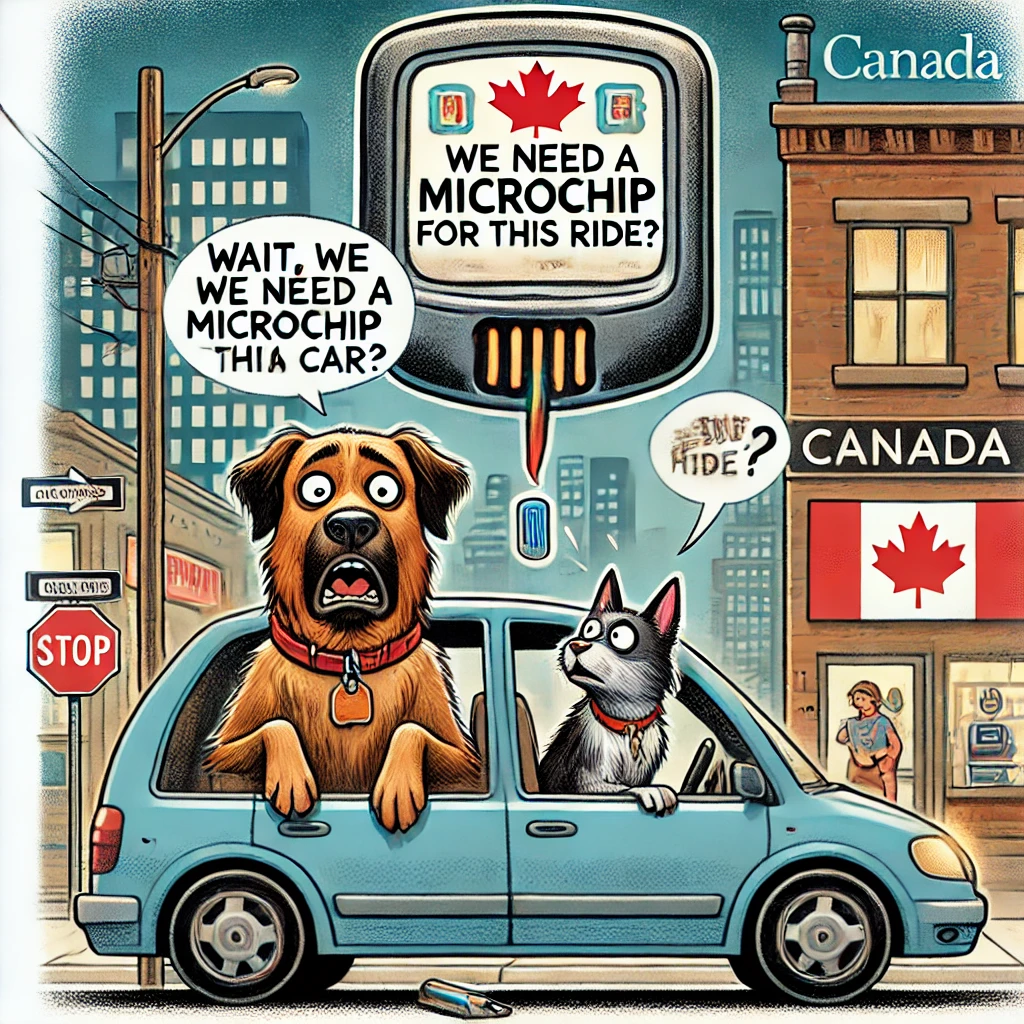What’s the Buzz About Pet Microchipping?
You’ve probably heard the term “microchipping” thrown around a lot, especially if you’re a pet parent. But there’s one question that’s causing quite a stir: Does Canada require pets microchipped by car? Hold on; do we drive our pets to get microchipped, or do we somehow install chips while on the road? Let’s clear up this highway of confusion with some laughs and straight facts.

Understanding Microchipping: What Is It, and Why Do It?
Microchipping is not a high-tech, futuristic gadgetry session where your pet turns into a mini GPS tracker on four legs. Instead, it’s a simple, tiny implant placed under your pet’s skin, usually between the shoulder blades, containing a unique ID number linked to your contact information. If your pet ever gets lost, animal shelters or veterinarians can scan the microchip to reunite you with your furry friend.
Is Microchipping Pets Required in Canada?
Let’s get straight to it: In Canada, the law does not require you to microchip your pet nationwide, but experts highly recommend it. Some municipalities may have specific regulations, and certain places might require it for pet adoption or travel purposes. However, microchipping “by car” is a complete misconception. The only thing you’re driving to is the vet’s office—no car mods required!
Debunking the Myth: No, You Don’t Need to Drive Your Pet to Be Microchipped by Car
The phrase “microchipped by car” sounds like we’re off-roading into some new-age pet service where your dog gets a chip in the drive-thru. Spoiler alert: that’s not happening. Microchipping happens at the vet’s office or animal clinic, and it’s a simple procedure that takes seconds—no pit stops or pit crews involved.
How to Microchip Your Pet: The Process Explained
Schedule an Appointment: Book a visit with your vet or local animal clinic.
Quick and Painless Procedure: The vet uses a needle to insert a microchip just beneath your pet’s skin. It’s quick, like a regular shot.
Registration: You need to register your pet’s microchip with your contact information. This step is crucial for reuniting with your pet if they get lost.
It’s as simple as that! No drive-thru window, no car mechanics—just a little chip and a whole lot of peace of mind.
Benefits of Microchipping Your Pet (Beyond the Car Confusion)
- Increased Chance of Reuniting: If your pet goes on an unplanned solo adventure, their microchip is the quickest ticket home.
- Permanent ID: Unlike collars and tags, a microchip remains permanent and cannot be removed or lost
- Low Maintenance: No battery, no monthly fee—just a one-time insert and occasional update of contact details.
Common Myths About Microchipping Pets (Including the ‘By Car’ Confusion)
- Myth 1: Microchips are GPS Trackers. Nope, they can’t tell you where your pet is hiding.
- Myth 2: It Hurts the Pet. It’s about as painful as a routine shot—minimal discomfort, maximum benefits.
- Myth 3: Microchipping Is Only for Dogs. You can microchip cats, rabbits, and other small pets too.
- Myth 4: You Can Microchip Your Pet by Car. Absolutely false, unless you’re calling your vet a car!
Conclusion: The Truth About Pet Microchipping in Canada
Microchipping your pet in Canada is a smart move, even if it’s not mandatory. While you don’t need to microchip your pet “by car,” you should chip and register your pet. It’s a small step that makes a big difference in keeping your furry family safe.
FAQs About Pet Microchipping in Canada
- Q: Is microchipping mandatory in all of Canada?
A: No, but experts highly recommend it for added safety. - Q: Can microchips track my pet’s location?
A: No, microchips aren’t GPS trackers; they only store ID information. - Q: How often should I update my pet’s microchip information?
A: Anytime you change your contact information, make sure to update the registry.




Zucchini Dog Food Topper: Lightly steam zucchini and mix it into your dog’s food for an added nutritional boost.